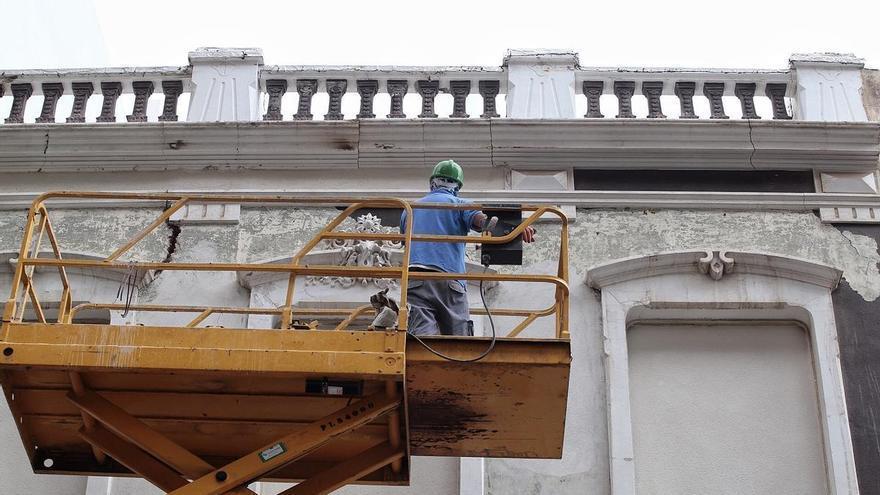
The increase in tourism in Canary Islands it is having a positive collateral effect on industrial businesses, which are those that are dedicated to the commercialization of goods. According to data released this Thursday by the National Institute of Statistics (INE), last June the Archipelago became the leader in Spain in billing for this type of company, with an increase of 8.5%, which caused sectors such as those dedicated to the sale of electronic components, tobacco and machinery to live a sweet moment.
The good data for the Canary Islands in the industrial sector contrasts with the national trend. And it is that in Spain, the sale of goods fell by 7% during the month of June, producing a setback in 12 autonomous communities. The explanation that the Archipelago has escaped from these bad data is in the tourist push, as explained yesterday to this newspaper from the Confederation of Entrepreneurs of Tenerife (CEOE) and the Canary Islands Industrial Association (Asinca).
Pedro Afonso, president of CEOE Tenerife, confirms that the increase in visitors is “giving play” to the Canarian industry, especially in terms of food in hotels and restaurants as well as energy consumption. In fact, Within the hotel industry, accommodation services increased their sales by 12.8%, while food and beverage services billed 8.2% more than in June 2022.
In the construction sector, Afonso considers that things “are not going well” but that it is maintained thanks to the rehabilitation of infrastructures and, above all, the momentum that is taking place in terms of public works.
Despite the fact that Afonso celebrates the positive data from the Canarian industry, he asks to anticipate a change in trend: «We have spent a long time denouncing the effect that the shortage of qualified labor can have, as well as the rise in the prices of raw materials for the industry. Those are our two swords of Damocles.” And he affirms that the possible shortage of grain worries him especially, since “it can generate a decrease in income for companies.”
For his part, the president of Asinca Virgilio Correa believes that the figures show how the island industry “has known how to get on the bandwagon of growth” after the pandemic and considers that at the national level “the consequences of the pandemic are still being felt.” As a negative aspect, Correa points out the 8.7% decrease in companies that were in the industrial sector during June compared to the same month in 2021.
Likewise, the president of Asinca warns about the consequences that the increase in the price of the shopping basket can have on family spending: «If you have to dedicate more money to food, you try to save elsewhere and postpone, for example, do a job in the kitchen. This is something we all do.”
The Islands, fourth in services
As in industry, the service sector has also been strengthened thanks to the arrival of visitors. Thus, the billing of services in the Canary Islands grew by 3.5% last June compared to the same month in 2022. These data place the Canary Islands as the fourth autonomous community where the greatest progress was made in terms of sales in the tertiary sector, only behind the Balearic Islands (+10.5%), Extremadura (+4.7%), and La Rioja (+4.5%).
As expected, tourism has been a key factor in the services and It represents “70%” of the income of the sector in the Islands, as Pedro Afonso from CEOE Tenerife puts it in value: “It is easy to see how those 200,000 daily tourists who live with us push the turnover.”
Regarding the annual rate of employment in the services sector, the Canary Islands was the fourth community where it increased the most compared to June 2022, with a rise of 2.6% and only behind the Balearic Islands (+5.9%). , Murcia (+3.4%) and Madrid (+2.8%).
At the national level, there was another contrast with the Canary Islands, since in June there was a drop of 0.7% in the billing of services in Spain. The year-on-year decrease means that industry billing has now had three months of year-on-year falls, although June’s was more pronounced than May’s (-2.9%) but less than April’s (- 8.1%).
Along with energy and intermediate goods, which led the setbacks in industrial turnover, Durable consumer goods also decreased their sales (-4.9%), compared to the increase experienced by capital goods (+8.7%) and non-durable consumer goods (+3.6%).
The branches where sales increased the most compared to June 2022 were the manufacture of electronic components (+25.7%) and the tobacco industry (+21.4%), while the largest year-on-year cuts in turnover were Coke factories and petroleum refining (-40.8%) and the chemical industry except cleaning and polishing items, perfumes and cosmetics (-24.6%) recorded.
















